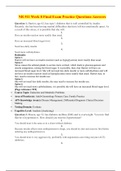Samenvatting
Samenvatting boek Perloff + Kardes CH 2,3,12 - Marketing en persuasieve communicatie (S_MPC)
- Instelling
- Vrije Universiteit Amsterdam (VU)
Samenvatting van hoofdstuk 1 t/m 13 van 'Dynamics of Peruasive communiction' van Perloff, en hoofdstuk 2, 3, en 12 van Kardes. Voor het vak ' marketing and Persuasive Communication' op de VU, 2e jaars Communicatie Wetenschap Bachelor vak.
[Meer zien]














